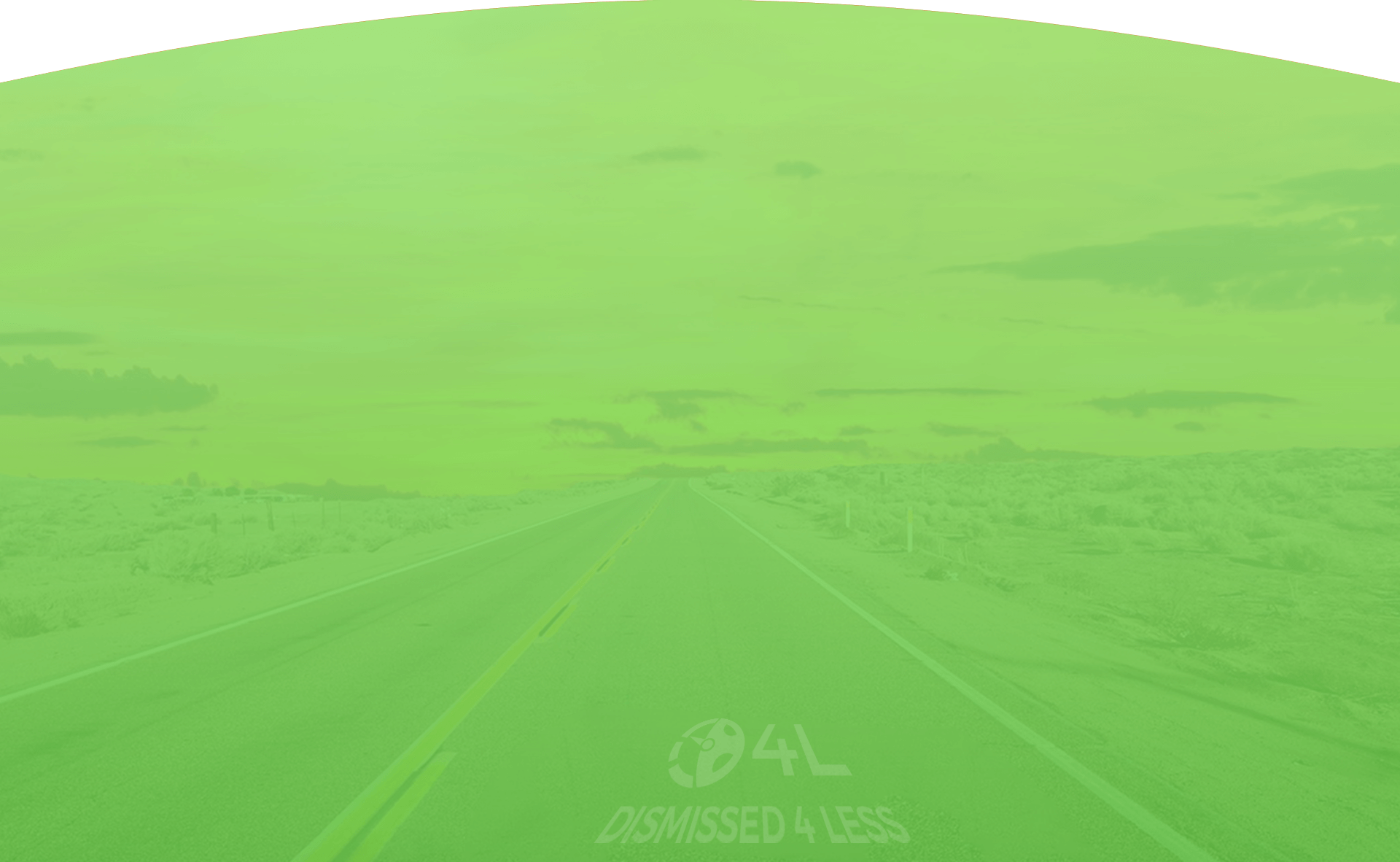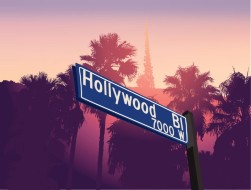Taking Care of Your Lane Violation Ticket in California
Batman violated too many California traffic and penal laws to count in this sequence. His lawlessness might or might not have been justified, but that’s the subject of another blog. Curiously, with the exception of that final turn into the downtown alley as Gotham’s finest converged on him, VC 21658, California’s lane-weaving law, might not have been among the Dark Knight’s transgressions.
For us non-superheroes, things work a little differently. It has been said that most people cannot drive more than a mile or two without violating at least one section of the Vehicle Code. Many VC provisions are quite vague, and California’s lane violation law might be at the top of the vagueness list.
At Dismissed 4 Less, we are not superheroes. But we are dedicated professionals who help hard-working people like you avoid the high cost of a California lane violation ticket. Our name says it all. We are not satisfied unless we produce the best possible results for the lowest possible cost.
VC 21658 Nuts and Bolts
Of all the vague traffic laws in California, this one is definitely in the top five. The words are straightforward enough. “A vehicle shall be driven as nearly as practical entirely within a single lane and shall not be moved from the lane until such movement can be made with reasonable safety.”
But many drivers, and many police officers as well, have a hard time understanding these words. In fact, many of the motorists who receive California lane violation tickets do not realize they have done anything wrong.
VC 21658 also applies to motorists who disobey “Slower Traffic Keep Right” and other such signs.
Words like “practical” and “reasonable” are very subjective. They mean different things to different people at different times. That vagueness makes it easy for officers to issue California lane violation citations, but makes it difficult for them to stand up in court. More on that below.
Additionally, this law first appeared in 1975. Back then, during the gas crisis of the 1970s, many people drove small passenger cars. The lane sizes on state highways and byways were designed to accommodate these cars, as opposed to the larger vehicles many people drive today. More on that below as well.
This law is also unique to California. In most other states, it’s illegal to leave a single lane of traffic without signalling, but it is okay to weave a bit in that lane. In fact, many drivers, particularly motorcyclists, weave in their lanes to make themselves more visible to other drivers. This behavior is illegal under VC 21658, but many people do not know that.
Is Lane Splitting Legal in California?
While we’re on the subject of motorcyclists and lane changes, we should take a quick look at lane splitting. When traffic backs up, usually on a highway, some riders straddle the lane dividers and travel between stopped or slowed vehicles.
Lane splitting is pseudo-legal in California. No Vehicle Code provision expressly allows this practice, and no provision expressly prohibits it. The California lane violation law is the closest thing to a lane splitting ban. But VC 21658 does not mention this practice.
That being said, lane splitting is usually a bad idea, even if done safely. This practice mars the reputation of motorcycle riders, and this reputation is already rather low. If lane splitters crash, jurors are often not very sympathetic to these victims. Many jurors already believe that most riders are little more than reckless thugs.
Consequences of a California Lane Violation Ticket
The VC 21658 fine is only $35. No big deal, right? Many people would probably pay that fine and forget the matter. However, when adding costs and Penalty Assessments, the total direct cost is $238. That’s too much money to ignore.
Additionally, state law gives cities and counties broad powers to add court costs and surcharges onto California lane violation tickets. These additional expenses could be significant.
VC 21658 is a one-point offense. If drivers amass six points in twelve months, the state automatically suspends the driver’s license. Generally, the state sends suspension notices to the address on the person’s drivers’ license. In some cases, that address is inaccurate. So, some people who are reading this post do not know their license is suspended.
There are indirect consequences as well, such as higher insurance rates. As a rule of thumb, a one-point infraction increases premiums about 10 percent. So, a California lane violation ticket is especially hard on younger drivers. Generally, drivers must pay the higher rate for at least three years before they can shop around for lower coverage.
If drivers miss a court date or deadline, they could be charged with violating CVC 40508. The extra “C” stands for “Criminal.” Since failure to appear is a criminal infraction, violators could face jail time.
Related Infractions
Several offenses are related to VC 21658. Technically, the officer could stack these violations. In other words, a motorist could get a California lane violation ticket as well as a citation for:
- Not driving on the right side of the road (VC 21650),
- Unsafe passing on the right (VC 21755), and/or
- Making an illegal U-Turn (VC 22102).
In California, it’s usually illegal to make a U-turn in a business district. Most through streets, and a few neighborhood streets as well, are in business districts. These maneuvers are only legal if a sign allows them and the U-turn was reasonably safe. There’s that subjective word again. Depending on the circumstances, almost anything could be unreasonably dangerous, at least in a police officer’s mind.
Possible Defenses
We hinted at a few California lane violation ticket defenses above. Let’s look at them in more detail.
Right off the bat, there is a difference between touching the white dashed line, double yellow line, or other boundary, and crossing this line. It is only illegal to cross the line. Generally, that means at least one tire must be completely over the line. There must be blank pavement between the outside (or inside) of the tire and the stripe.
Rather unsurprisingly, officers always testify that was the case. But their testimony does not always hold up under scrutiny. Frequently, an officer follows a vehicle, waiting for an excuse to pull over the suspicious-looking driver. If the motorist swerves to the left or right, the front tire might indeed cross the line. But since the officer is behind the driver, it’s almost impossible to tell for sure.
This argument might not hold up in court if the motorist hugged the lane marker for more than a few moments. That line of thought gets us back to the aforementioned lane splitting violations.
When this law was encoded a half-century ago, small cars had plenty of wiggle room inside their own lanes. As a result, if such drivers crossed lane markers, they were probably driving unsafely. But today, many operators drive large SUVs and trucks which barely fit into the lane. A slight sway might send an Escalade over the line, but the same sway would be legal for a Camry.
This problem is more acute in many downtown areas. Frequently, these streets have particularly narrow lanes, especially if a designated bike lane has been set aside or the sidewalk has been widened.
Furthermore, the “reasonableness” language cuts both ways. Just like officers can argue almost any maneuver was unreasonable, drivers can argue almost any maneuver was reasonably safe. This argument often holds up in court if the driver activated a turn signal and checked mirrors. It helps if the driver was not speeding and traffic was no worse than moderate.
The necessity defense is also available. An emergency, like a piece of debris in the road or avoiding a car which was changing lanes illegally, might justify a California lane violation.
As a last resort, the vagueness defense might be available. Typically, laws are unconstitutionally vague if:
- A regular person cannot understand what the law prohibits, or
- The law can be enforced in several different ways.
That first bullet point arguably applies to California lane violation tickets. This law is hard to understand, because it is so subjective and rather unique to the Golden State.
However, the vagueness argument is something of a long shot. If there are other extenuating circumstances, the defense might hold up in court. For example, the motorist might be a newly-licensed driver or someone who recently moved to California.
Resolving a Citation
Traffic school and a Trial by Written Declaration are usually the two best ways to resolve a California lane violation infraction.
Traffic school eligibility requirements vary in different jurisdictions. Generally, if the motorist has a reasonably clean record and has not taken traffic school in the last two years, this option is available.
Even if drivers are eligible for traffic school, many jurisdictions do not offer it straightaway. The city or county makes little or no money if the motorist opts for traffic school. Therefore, motorists must usually request this relief, and they must request it in the right way.
As for the class itself, there are plenty of options. Many of them are available online. Make sure the class you choose is on the approved list for that court. This requirement is especially important if you are taking the course out-of-state.
Traffic tickets are masked from a driving record if the motorist successfully completes traffic school. So, the point on the driving record disappears. That means no insurance rate hike.
However, the law enforcement record typically remains. So, the next time you see flashing lights in the rearview mirror, the officer will probably know about your previous California lane violation ticket. That knowledge could prompt the officer to issue another citation instead of a warning.
A Trial by Written Declaration was a little-used loophole until the 1990s state budget crisis. To raise revenue, lawmakers significantly increased VC penalty assessments. At the same time, to write more citations, law enforcement agencies aggressively enforced provisions like the California lane violation law, which had hitherto received little attention.
Motorists soon figured out that a Trial by Written Declaration was a good way to fight a traffic ticket without having to go in person. Judges consider motorists’ arguments, such as the road’s lane configuration or the officer’s poor viewing angle. But in many cases, prosecutors do not have a chance to reuben these arguments. And, it’s a lot easier to win any contest if the other side does not show up.
Trial by Written Declarations are often successful if the motorist presents arguments the right way and follows the proper procedures. That’s why it is important to partner with a service like Dismissed 4 Less which is experienced in these matters.
“Success” is a subjective word, much like “reasonably safe” is a subjective phrase. If the motorist has a rock-solid defense, the judge might throw the California lane violation ticket out of court. In other situations, the judge might uphold the citation but offer traffic school as an alternative to conviction.
In any event, if the driver does not like the Trial by Written Declaration result, the court must hold a live trial de novo. So, the Trial by Written Declaration carries no risk.
Fighting a citation is the best way to avoid the high cost of a California lane violation ticket. Since the deck is stacked against drivers, these fights are often unsuccessful without a professional partnership. At Dismissed 4 Less, we offer a number of hassle-free ways to contest your California lane violation ticket. We offer the same level of service for other Vehicle Code infractions as well. So, call us today.







